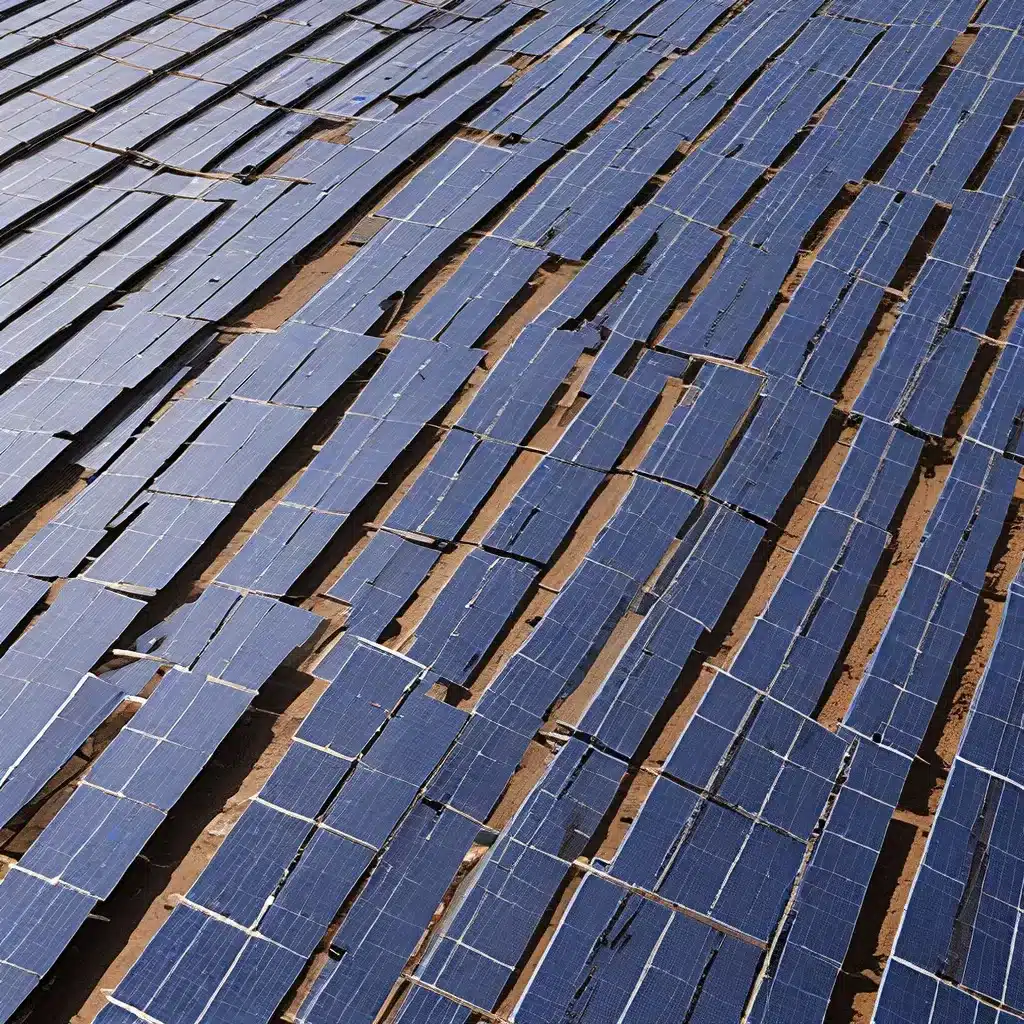
Ah, the world of renewable energy – where the future is brighter than ever before! As someone passionate about sustainability and the incredible potential of solar power, I’m thrilled to share with you the latest advancements that are truly revolutionizing the solar energy landscape.
Quantum Leap in Efficiency: Introducing Perovskite Quantum Dots
If you thought solar technology had already reached its peak, prepare to be amazed. Researchers at the Ulsan National Institute of Science and Technology (UNIST) have unveiled a groundbreaking discovery that’s set to redefine the boundaries of what’s possible in the world of photovoltaics.
Led by Professor Sung-Yeon Jang, the team has developed a novel ligand exchange technique that enables the synthesis of organic cation-based perovskite quantum dots (PQDs). These remarkable nanocrystals possess exceptional stability and the ability to suppress internal defects, resulting in a solar cell efficiency that’s nothing short of astounding.
According to the research published in Nature Energy, the team’s innovative PQD solar cells have achieved an impressive 18.1% efficiency – the highest ever recorded for quantum dot solar cells, as recognized by the National Renewable Energy Laboratory (NREL) in the United States.
But wait, there’s more! These cutting-edge solar cells don’t just boast impressive efficiency; they also demonstrate exceptional stability, maintaining their performance even after long-term storage for over two years. This is a game-changing breakthrough, as previous PQD solar cells were often plagued by issues like defects and limited efficiency.
Revolutionizing the Future of Solar Energy
The implications of this research are truly far-reaching. As AI-driven advancements continue to enhance photovoltaic technology, the potential for widespread adoption and transformative impact on the renewable energy landscape is undeniable.
Just imagine the possibilities – solar panels that are more efficient, more reliable, and more affordable than ever before. With the advent of this revolutionary PQD technology, the dream of cost-effective, sustainable energy for all may be closer than we ever thought possible.
But what’s truly remarkable is the simplicity of the manufacturing process. Unlike traditional solar cells that require complex growth processes on substrates, these organic PQDs can be produced through a streamlined approach involving simple spraying or application to a solvent. This opens up a world of possibilities for large-scale, high-quality solar cell production in a variety of environments.
Unlocking the Potential of Quantum Dots
The excitement surrounding this breakthrough doesn’t end there. Quantum dots (QDs) have been the subject of intense research and development for years, with the Nobel Prize in Chemistry awarded last year to scientists who pioneered their use in advanced nanotechnology.
These semiconducting nanocrystals, ranging from several to tens of nanometers in size, possess the incredible ability to control photoelectric properties based on their particle size. This makes them a prime candidate for revolutionizing solar energy technology.
However, the practical application of QDs as solar cells has long been hindered by the challenge of reducing the distance between them through a process called ligand exchange. This is where the UNIST team’s remarkable innovation comes into play, as their alkyl ammonium iodide-based ligand exchange strategy has successfully overcome this hurdle.
Pushing the Boundaries of Efficiency and Stability
By employing this innovative approach, the researchers have managed to significantly improve the efficiency of organic PQDs, which were previously limited to a mere 13% using existing ligand substitution technology. Now, with an impressive 18.1% efficiency, these solar cells have reached a new benchmark, surpassing even the performance of their inorganic counterparts.
Moreover, the exceptional stability of these organic PQD solar cells is a testament to the team’s groundbreaking work. Unlike previous attempts that struggled to maintain performance over time, these cutting-edge devices have demonstrated the ability to retain their efficiency even after prolonged storage.
This remarkable achievement is a clear indication that the future of solar energy is brighter than ever before. As we continue to push the boundaries of what’s possible, renewable energy solutions like these revolutionary PQD solar cells will play a crucial role in driving the transition towards a more sustainable and eco-friendly tomorrow.
Paving the Way for a Greener Future
The significance of this research cannot be overstated. It represents a quantum leap forward in the realm of photovoltaic technology, opening up a world of possibilities for the widespread adoption of solar power.
Imagine a future where solar panels adorn the rooftops of homes and businesses, effortlessly harnessing the power of the sun to meet our ever-growing energy demands. With the increased efficiency and stability of these PQD solar cells, the dream of affordable, reliable, and sustainable energy for all may soon become a reality.
As we continue to explore the frontiers of renewable energy, it’s crucial to keep an open mind and embrace the groundbreaking advancements that are shaping our future. The work of Professor Jang and his team at UNIST is a prime example of the incredible progress that can be made when we combine scientific innovation with a relentless pursuit of a greener, more sustainable world.
So, let’s raise a metaphorical glass to the pioneers of the solar energy revolution. Their tireless efforts have paved the way for a brighter, more sustainable tomorrow, and I, for one, can’t wait to see what the future holds.

